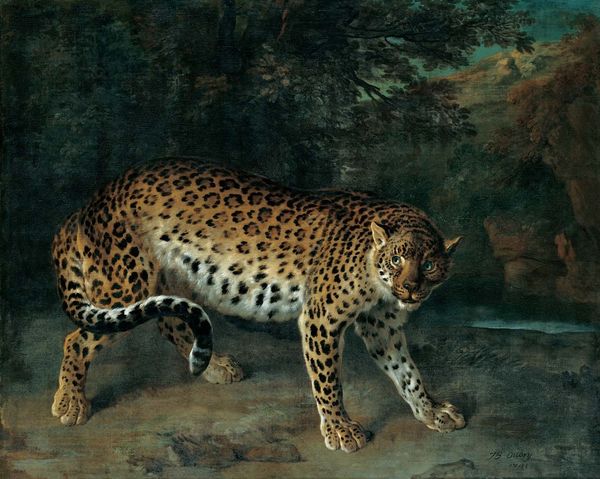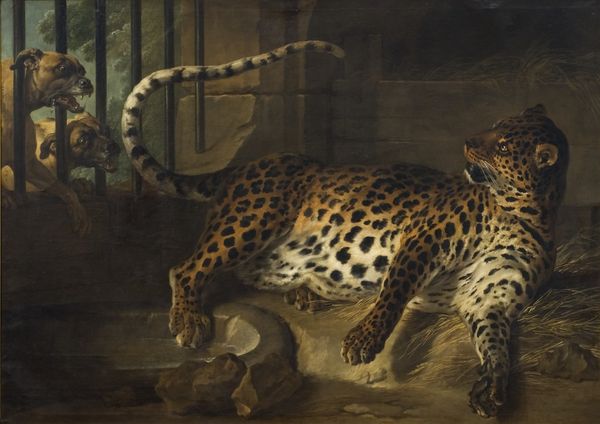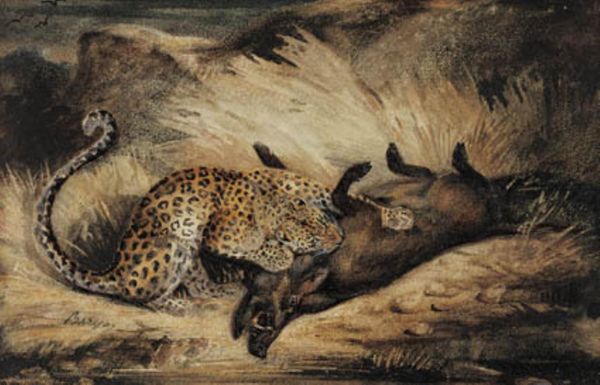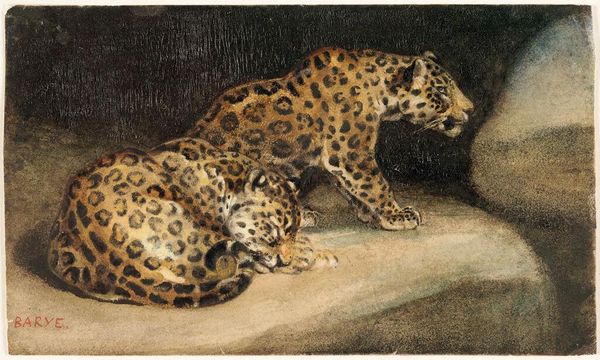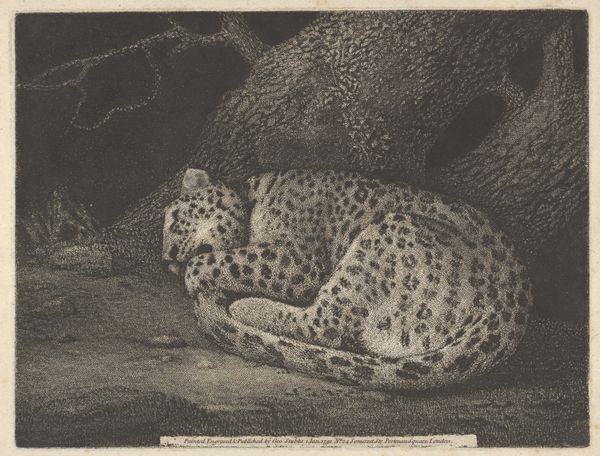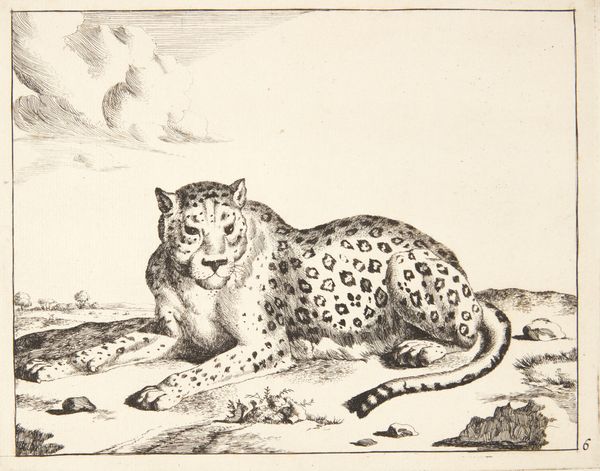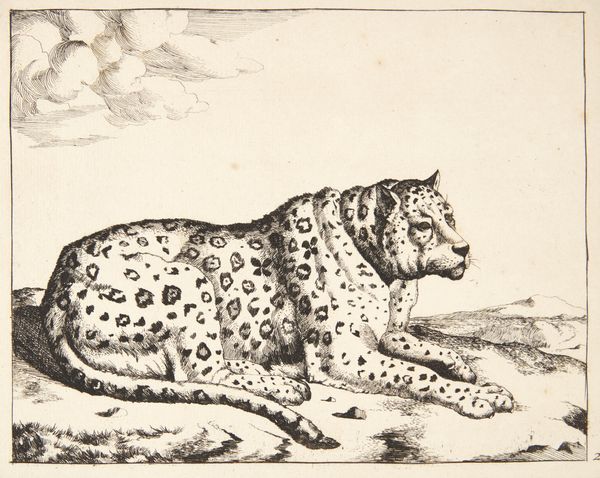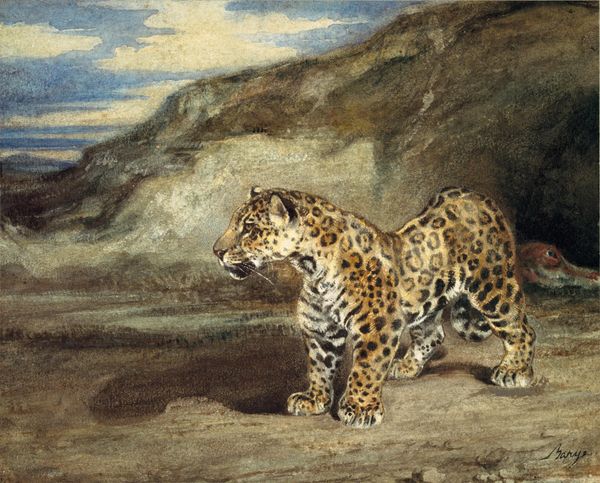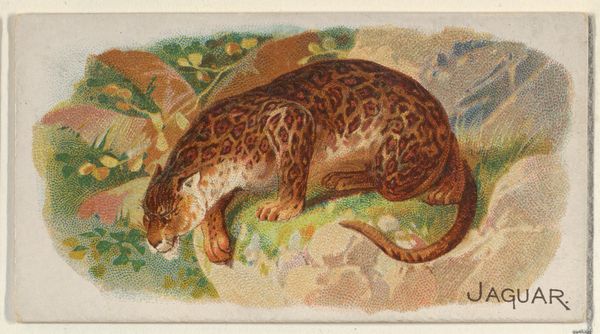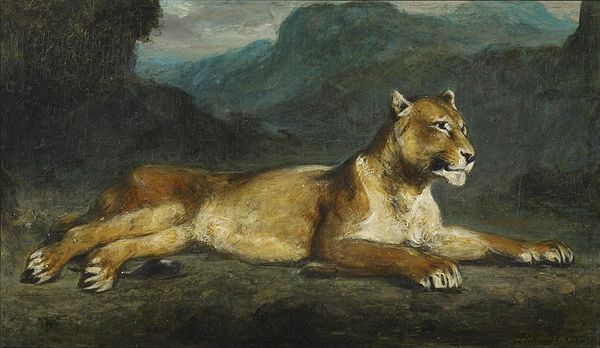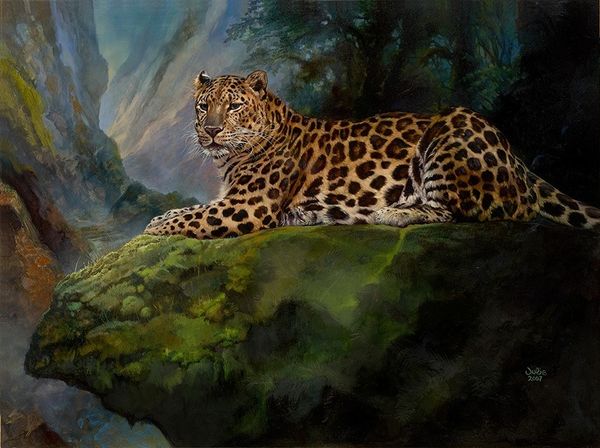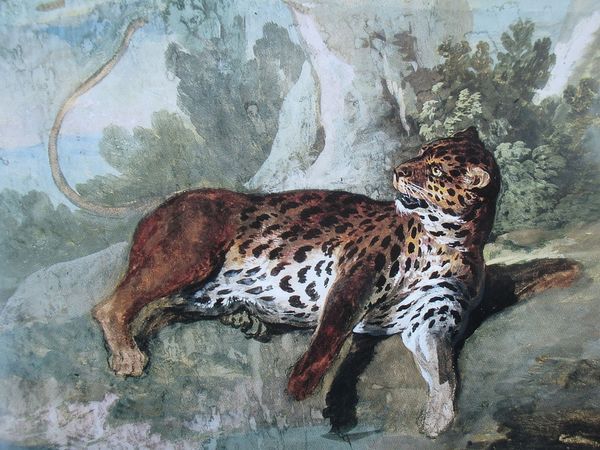
Copyright: Public Domain: Artvee
Curator: Here we see "Sleeping Leopard," an oil painting created in 1777 by George Stubbs. It is an oval composition, small, depicting the animal in a state of deep repose. Editor: There's something deeply unsettling about this scene. Despite the supposed serenity of the sleeping creature, its tightly curled posture and the dark background hint at underlying vulnerability and, dare I say, a kind of melancholy. Curator: I think your interpretation speaks volumes about how perceptions of nature were shifting. Stubbs was renowned for his scientific approach to depicting animals, grounding his work in anatomical study. This scientific grounding, in turn, gave authenticity to how nature was perceived by the viewer in both society and politics. Editor: Yes, his skill in anatomy is clear. But I can't ignore the possible layers of commentary on domestication and the subjugation of wildness, perhaps even broader colonialist power structures. After all, wealthy patrons often commissioned such works. What did owning such an image represent, culturally and politically? Curator: Those commissions, alongside Stubbs’ anatomical investigations, facilitated his reputation. His skill, promoted by societal power structures, enabled these insights to come forward. It wasn't a one-way transaction. Patrons could broadcast social standing, and Stubbs used patronage to depict nature, informing popular understanding. Editor: I can see the complexities there. Yet the choice to depict the leopard asleep is interesting. It disrupts expectations, challenging assumptions about power. By denying viewers a vision of fierce dominance, is Stubbs perhaps hinting at a disruption of prevailing norms of the day, about nature? About power? Curator: Well, remember that while the scientific lens offers insight, there’s often artistic interpretation. What do you read into it? Editor: It's hard to know Stubbs' specific intent, but I find a quiet defiance here, perhaps even empathy. Seeing a large predator this exposed invites us to consider its own vulnerabilities. In our modern context, perhaps this piece is a plea for the consideration of endangered creatures, urging a reconsideration of our relationship with the natural world, today. Curator: That's an interesting perspective that frames a vital narrative within this painting, both back then and today. Editor: Exactly, and this speaks to art's incredible, persisting ability to echo across time and still elicit such considerations.
Comments
No comments
Be the first to comment and join the conversation on the ultimate creative platform.
